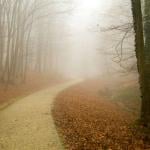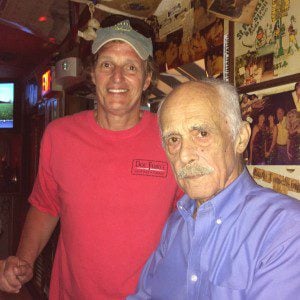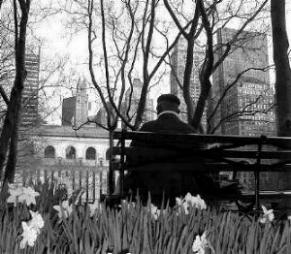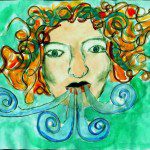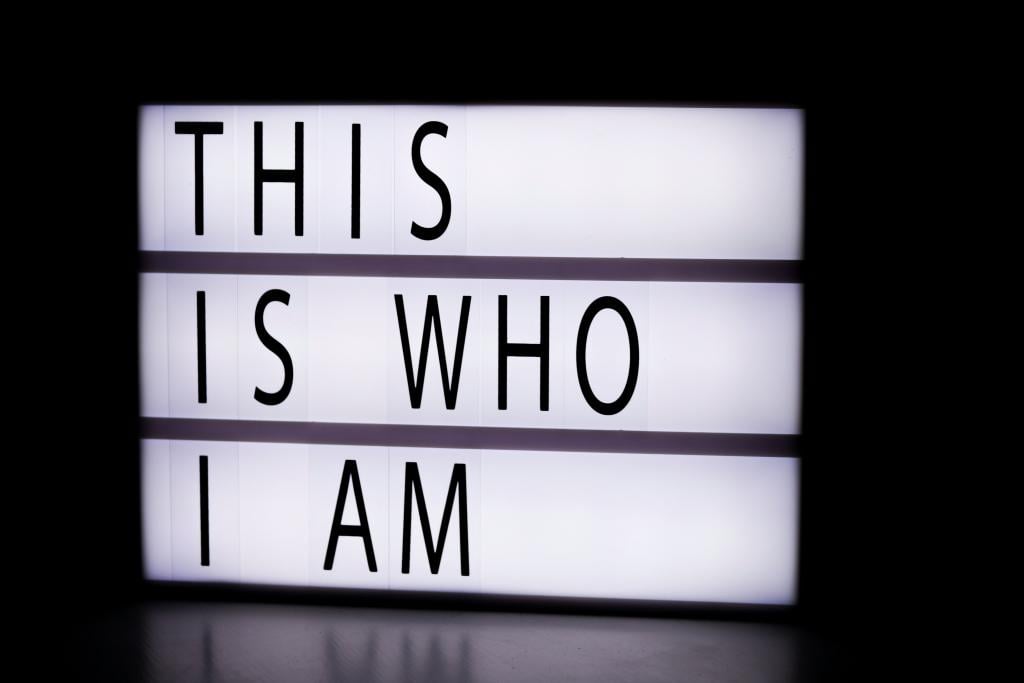
Our culture doesn’t think storytelling is sacred; we don’t set aside a time of year for it. We don’t hold anything sacred except what organized religion declares to be so. ~Ursula K. Le Guin
Have you ever told someone your personal story? Storytelling is important because it’s a fundamental way we connect with our fellow human beings. When we share our human experience with others, or someone shares their experience with us, it helps us recognize our shared humanity.
Stories help us make sense of the world around us. They give us a window into other cultures and beliefs. And by telling others our own stories, we reveal what really matters in our own lives—what makes us tick. That’s important, as James Hillman points out in this passage from The Force of Character:
Without stories, there is no pattern, no understanding, no art, and no character—merely habits, events passing before the eyes of an aimless observer, a life unreviewed, a life lost in the living of it.
Stories from three very different female storytellers
Three books by female authors recently made their way onto my reading list. They tell three diverse stories, as the writers come from three different cultures. While their backgrounds and life experiences vary, one thing connects them. They all have a unique tale to tell about the people and events that have shaped their lives.
Book #1. A Writer from India who Charts the Sacred Journeys of her Friends
In, Women Who Wear Only Themselves: Four Travelers on Their Sacred Journeys, Arundhathi Subramaniam writes about four women she knows, all of whom have chosen to walk a unique spiritual path. But equally fascinating is the author’s own path which she tells at the beginning of the book.
Subramaniam was a poet and journalist, when she began to feel “a hunger.” In her words: “A mounting, nameless hunger for something more. Something deeper, truer, less heavy, less changeable.” To try and satisfy this indefinable hunger, she moved into an ashram. She then set out on a spiritual path of her own.
She defines her path as “vagabondage.” For years, she moved from place to place, home to home, “learning to live as a guest, not an entitled host.” Subramaniam ends up with her feet in two worlds, with homes in both India and in New York City. But most compelling are not the places she has been, but the people she has befriended. She finds herself drawn to female mystics, those “found in religious traditions across the board …often relegated to the fringes.”
One such mystic is Maa Karpoori, who tells how she “found” herself. In her words, “there is a process of weeding, of stripping down, paring away needless acquisition … there is also a process of crafting a new garment, a new skin—lighter, airier, less stiff, more porous—into which personal discovery as well as insights garnered from other sources and traditions are internalized, woven in.”
Another of the four mystics is Sri Annapurani Amma, “a great raging river of a human being.” She spends all her time stark naked. Her guru is a long-dead saint. As Subramaniam points out, Amma refuses to be separated from her master by time or place and consults with him regularly. Is she crazy? Amma herself explains:
There are all kinds of people in the world, most of them mad about riches, position, power, family, attachments of various kinds. There are varieties of insanity that are normalized by the world … I am only mad for my guru.
Book 2: A Writer from the Midwest Whose Young Brother Foretold His Death
In What My Brother Knew: A Memoir, Kristina Amelong tells the story of her brother Jay who passed away forty years ago but has lived on in her mind ever since. As a 13-year-old, Jay was bike-riding with friends when he was hit by a car and died. The freaky thing is he had predicted his own death, repeatedly telling his friends and family: “I will die when I am young, while riding my bike.”
The book spends many pages detailing Kristina’s self-destructive path of drug addiction and reckless sex. She comes close to ending her own life. But decades later, she begins a quest to find out what really happened to her brother, locating several of his friends who are now scattered around the country.
Amelong gets to the startling truth: At age 12 or 13, Jay and his friends were doing LSD. He saw his death while on an acid trip. He began telling his closest friends about the vision of his death and that he was okay with his fate. He repeats the story many times, until one day it comes true, even predicting the color of the car (green) that would hit him. An old friend of his points out:
Acid often gives deep insight, and it affects time perception. Space-time is not a separate space and a separate time, but rather an interconnected process. All time exists all the time.
Amelong speculates that Jay’s acid trips had given him access to the deeper nature of the universe. And while the tale may sound far-fetched to some, I admit that I too was dropping acid in the very early-70s at the age of 14. Though the circumstances were different, I also caught a glimpse of my death, but that’s a story for another day.
Book 3: A Woman Tells the Tale of Her Beloved Grandfather in Rural Pakistan
Yasnib Sana hails from Panjgur, Balochistan. I had no idea where that was, but after consulting a map found it in far west Pakistan, near the border with Iran. Sana, a fledgling journalist and poet in her mid-20s, self-published a thin book to “the memory of my grandfather,” a man named Mohammad Hayat who passed away in 2023 at the age of 90.
A former journalist, Hayat was a respected elder in the community, “a peace-loving man,” known to settle disputes between rival tribes. He encouraged his granddaughter to pursue an education in an area where the female literacy rate is under 40%. Late in life, he would sit in his garden talking with the plants and flowers.
While Sana’s English is a little rough in spots, her emotions are conveyed with clarity and impact. She finds that memories of her grandfather are still “alive inside my heart” and “present everywhere.” Her remembrances are also tinged with regret. The last time she saw him, he asked if she would take him for a walk. She said no, to wait until he had recovered from a bout of illness. Only there was no next time. Sana advises us:
If you have grandparents by your side, sit with them, share stories with them, go for a walk, hug them, hold their hands and look into their eyes. The lessons they tell us through their experiences are valuable. Value that time before it’s too late.
What’s your story? What gives your life meaning? What are your passions and beliefs? What people, what moments, what ideas are important to you? What are your successes? Your regrets? How do you want to be remembered? As the three writers above demonstrate, there’s no better person to tell the story than you.



